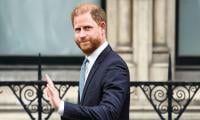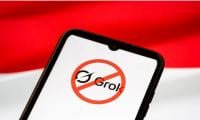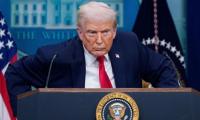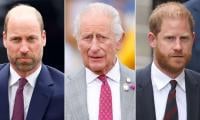Profile, chronology of key events in Afghanistan since 1919
LAHORE: Now that the Taliban are bracing up to form their government in the restive Afghanistan, a country of 32.23 million people and home to world’s largest Buddhas, unrest reigns supreme in this mountainous landlocked country at the crossroads of Central and South Asia.
Having a GDP of $72.91 billion in 2018, and occupying an area of 652,864 square kilometres, Afghanistan has historically witnessed numerous military campaigns launched by Alexander the Great nearly 2,200 years ago, Mongols, Mauryas, Arabs, British and the Soviets.
The first Moghul Emperor, Zahir-ud-Din Babur (1483-1530) had also captured Kabul in 1504. Here follows Afghanistan's profile and eventful history since 1919, when Emir Amanullah Khan had declared independence from the British influence:
In 1953, General Daud became the Premier. In 1963, he was forced to go home. In 1973, Daud again seized power in a coup, but was overthrown and killed in 1978 in a pro-Soviet coup this time.
In 1979, the Soviet Red Army invaded Afghanistan. Ruler Hafeezullah Ameen was killed. In 1980, Babrak Karmal was installed as ruler by the Soviets. Millions of Afghans had fled to Iran and Pakistan.
In 1986, the US had supplied arms to Mujahideen outfits to fight the Soviets. Karmal was replaced by Najibullah. Between May 1988 and February 1989, the embarrassed Red Army had to withdraw its troops amid a civil war.
In 1992, Najibullah was ousted, He was offered asylum by the-then Indian Premier, Narasimha Rao, but failed to escape and sought refuge in UN's Kabul offices. In 1996, Taliban captured Kabul and Najib was killed. Women were barred from working and stern Islamic punishments were introduced. The next year, Pakistan and Saudi Arabia recognized Taliban as legitimate rulers.
On September 9, 2001, the anti-Taliban Northern Alliance leader Ahmad Shah Masood was killed and just two days later, the 9/11 event had rocked the world. In October of the same year, the US had started bombing Afghanistan, and Hamid Karzai was sworn in as head of an interim power-sharing government. In 2004, Karzai won the presidential ballot. In 2005, the whole of Afghanistan went for polls.
In 2009, Karzai again won keys to president's office as his rival Abdullah Abdullah had pulled out of the race.
In 2011, ex-President Burhanuddin Rabbani was killed. In 2012, a donors' moot at Tokyo pledged $16 billion as civilian aid to Afghanistan. In May 2012, a NATO summit endorsed the plan to withdraw combat troops by end-2014.
In 2014, Ashraf Ghani and Abdullah Abdullah surfaced as rivals for Afghan presidency, but signed a power-sharing pact. Ghani was sworn in as president.
In 2015, US President Obama announced he would delay the withdrawal of his troops from the embattled country, following Ashraf Ghani's request. In July 2015, Taliban finally announced death of their leader Mullah Omar and Akhtar Mansoor replaced him. In May 2016, Akhtar Mansoor was killed by the US in Pakistan.
In December 2019, US President Trump said he would withdraw 4,000 troops. In November 2020, Trump formally initiated a partial pull-out of forces from Afghanistan and Iraq. In April 2021, President Biden announced withdrawal of all US troops between May and September. By June 2021, the US military had withdrawn more than 90% of its troops and equipment.
And on August 15, 2021, the sitting Afghan President Ashraf Ghani fled his country following the arrival of Taliban in Kabul, a city of 4.6 million.
-
 Rachel McAdams Becomes Object Of Jokes At Hollywood Star Of Fame Event
Rachel McAdams Becomes Object Of Jokes At Hollywood Star Of Fame Event -
 South Korea's Ex-PM Han Duck-soo Jailed For 23 Years Over Martial Law Crises
South Korea's Ex-PM Han Duck-soo Jailed For 23 Years Over Martial Law Crises -
 Global Markets On Edge Over Greenland Dispute: Is US Economic Leadership At Risk?
Global Markets On Edge Over Greenland Dispute: Is US Economic Leadership At Risk? -
 King, Queen Visit Deadly Train Crash Site
King, Queen Visit Deadly Train Crash Site -
 Oxford Research Warns ChatGPT Reflects Western Worldviews
Oxford Research Warns ChatGPT Reflects Western Worldviews -
 UK Inflation Unexpectedly Rises To 3.4% In December, The First Increase In Five Months
UK Inflation Unexpectedly Rises To 3.4% In December, The First Increase In Five Months -
 Meghan Markle Set To Take Big Decision On Returning To UK For Invictus Games
Meghan Markle Set To Take Big Decision On Returning To UK For Invictus Games -
 Prince Harry To Leave Britain One Day Earlier Than Expected For THIS Reason
Prince Harry To Leave Britain One Day Earlier Than Expected For THIS Reason -
 The Way You Consume Sugar Could Be Affecting Your Health
The Way You Consume Sugar Could Be Affecting Your Health -
 Brooklyn Beckham Gets Backing From Vanessa Marcil Amid Feud With Parents
Brooklyn Beckham Gets Backing From Vanessa Marcil Amid Feud With Parents -
 OpenAI Uses AI To Detect Under 18 Users On ChatGPT
OpenAI Uses AI To Detect Under 18 Users On ChatGPT -
 Philippines To Lift Ban On Grok AI After Musk's Platform Commits To Fix Safety Concerns
Philippines To Lift Ban On Grok AI After Musk's Platform Commits To Fix Safety Concerns -
 Trump Vows ‘no Going Back’ On Greenland Ahead Of Davos Visit
Trump Vows ‘no Going Back’ On Greenland Ahead Of Davos Visit -
 Alexander Skarsgard Breaks Silence On Rumors He Is Bisexual
Alexander Skarsgard Breaks Silence On Rumors He Is Bisexual -
 King Charles Faces Rift With Prince William Over Prince Harry’s Invictus Games
King Charles Faces Rift With Prince William Over Prince Harry’s Invictus Games -
 Elon Musk’s Critique On ChatGPT Safety Draws Sharp Response From Sam Altman
Elon Musk’s Critique On ChatGPT Safety Draws Sharp Response From Sam Altman



